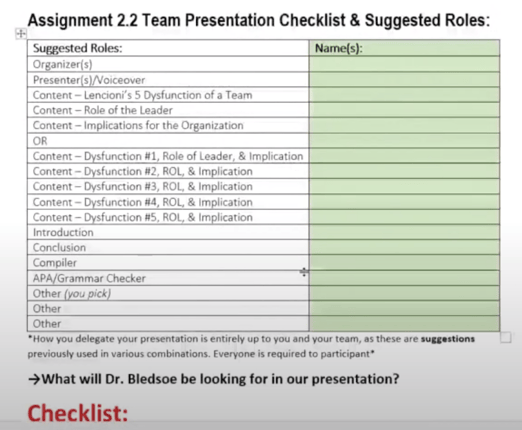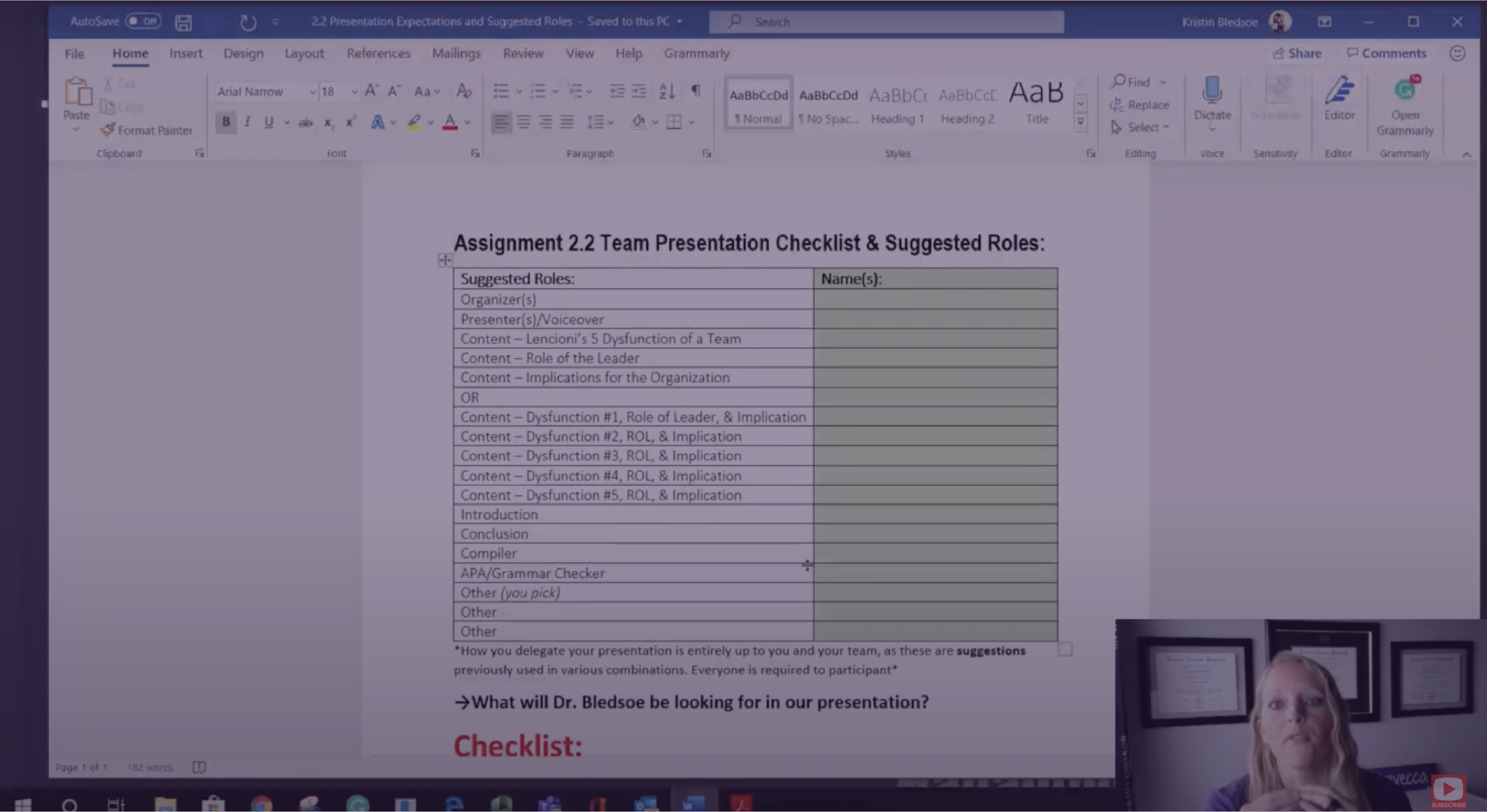With moving your classroom online, you might have some questions:
- How can you virtually collaborate on team projects?
- What does the setup look like for online students?
- How do you manage and grade those projects?
- What tools do you use?
No matter what educational platform you use, it is easier than you might think to manage group projects and discussions. Dr. Kristin Bledsoe, Trevecca's associate director of the Doctor of Education in leadership and professional practice, shares her tips and tools for managing team projects in an online learning environment.
Tip 1: focus group discussions and create roles
When it comes to group discussions, the first step is to form the groups of students and then share an initial post with the assignment information. In order to get the conversation started, I recommend requiring each group member to follow up or comment on everyone else's posts to really get everyone involved in the discussion.
Next, I recommend that every student has a different role in group assignments and making this clear in the assignment. This is to make sure all aspects of the assignment are being discussed and that my expectations are clear. I like to have each student select a role based on suggested roles I give them. My process is to create a dynamic document where each student can select a role. In this document, I also reiterate my expectations for the assignment. You can a screenshot of one of my documents below.

Tip 2: make smaller groups
Smaller groups help students feel more open and free to discuss and brainstorm with each other. I always recommend three to four students if possible. When groups are larger, some students' voices can get lost, and this is discouraging for the student and might encourage them to shy away. Maxing groups at three or four people really sets the tone for a great group project and lets the students' different personalities shine.
Tip 3: break the project down into multi-steps
In the virtual setting, I've found that doing a few pre-assignments before a big group project sets everyone up for more success. Big presentations and assignments can be overwhelming, especially in the virtual setting, but breaking it down into smaller steps can help make sure everyone is on the right track. Start the project with having the group put together a proposal or outline- something to help them build their confidence together. This also gives you the opportunity, as the facilitator, to focus your students on what the objective is and redirect any problems or concerns you may see as you go along.
Tip 4: facilitation
Now that you've separated your students into several small groups, make sure you add yourself to each group so you can engage with the students as well. This will look different depending on what platform you're using for the discussion. To switch things up from a typical discussion board in your LMS, I like to create groups in Microsoft Teams and give each a fun name. Microsoft Office has a lot of great tools, and I highly recommend Teams for group collaboration. Students can use Teams on both their computers and their phones, which makes it easy for facilitators as well. By including yourself in the groups, you can check on participation and you can document things as the students progress.
Something I do the first week of class that really helps with facilitation is to sending out an email to each group. This email will include all four members of the team. This email serves as a reminder that the project is coming up. I also include a quick video where I again lay out the expectations. I have found this simple email to be very beneficial, as when the students start responding to each other, I'm copied on the email, so I can see who's responding and document and track what's happening in the group. And like I mentioned in tip one, assigning and knowing their roles as they go along is really helpful, and I think that's really important to the grading process. Being in the loop and checking in also allows for early problem resolution. If you identify a problem through the group's communication, you can quickly assess and regroup.
Tip 5: grading
Grading is always a little tricky, but I think if following the steps I've mentioned above with communicating and making sure that you're engaged with your teams really sets you up to be able to grade appropriately. Students are going to be holding each other accountable because they've been given roles. And if you allow the students to have an opportunity for feedback, that really helps you assess how this group project has gone and if any points need to be deducted one way or the other.
So at the end of the day, what's the goal?
The goal is to encourage teamwork. It's necessary to encourage accountability. Steve Jobs said, "Great things in business are never done by one person, they're done by a team of people." And that is a philosophy that we want to hold our students accountable to.



